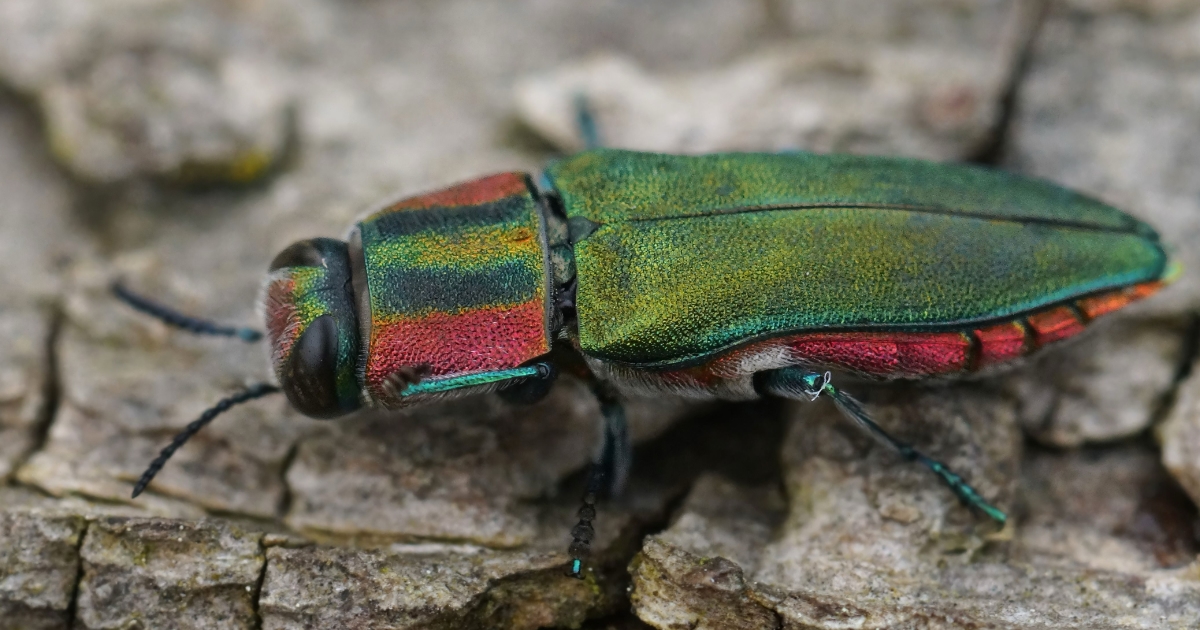If you have ash trees on your property, it’s time to get informed about one of the most destructive tree pests in America: the emerald ash borer (EAB). This tiny beetle has made its way across our state and is putting the health of millions of ash trees, including those in your yard, at serious risk.
What Is the Emerald Ash Borer?
The emerald ash borer is an invasive beetle originally from Asia. Adults are a shiny metallic green and about a half-inch long. At the same time, the beetle itself isn’t dangerous to people or pets, its larvae tunnel inside ash trees, blocking water and nutrients, and eventually killing the tree, often in as little as three years.
How Do I Know If My Ash Tree Is Infested?
Spotting early signs of infestation is crucial for saving your trees. Watch for:
- Thinning leaves and dead branches in the upper canopy (the top part of the tree)
- Small D-shaped holes in the bark, where adult beetles have emerged
- S-shaped tunnels just under the bark, made by larvae
- Sprouting growth at the base or trunk of the tree
- Increased woodpecker activity (they love eating the larvae)
- Cracking or splitting bark and sawdust-like material around the base
If you see one or more of these symptoms, your ash tree may have EAB. Early intervention is key—severely infested trees are rarely saved.
What Should Property Owners Do?
- Identify Your Trees
First, make sure your tree is really an ash. Unsure? Reach out to a local arborist, nursery, or call the Missouri Department of Conservation’s Master Gardener Hotline at 417-874-2963 for help. - Act Fast If You Have Ash Trees!
Healthy ash trees can be treated and saved. Treatment is typically done by injecting insecticide (like emamectin benzoate) directly into the trunk or by a soil drench around the roots. These treatments are most effective when started before major damage occurs, and usually last 1–2 years. Preventative treatment is recommended, especially in areas where EAB is widespread. For trees already showing symptoms, contact a certified arborist as soon as possible; they’ll assess if treatment is still an option or if removal is necessary. - Don’t Move Firewood!
EAB often spreads by hitchhiking on firewood and ash logs moved between counties or states. Never move wood from infested areas, and always purchase your firewood locally. - Replace or Remove
If a tree is dead or too damaged, prompt removal is safest. Dead ash trees quickly become brittle and hazardous. Missouri property owners should responsibly dispose of removed trees to prevent EAB from spreading further. - Keep Trees Healthy
A strong tree is more resilient! Water, mulch, and prune your trees properly. Minimize stress during construction or landscaping near the tree base.
